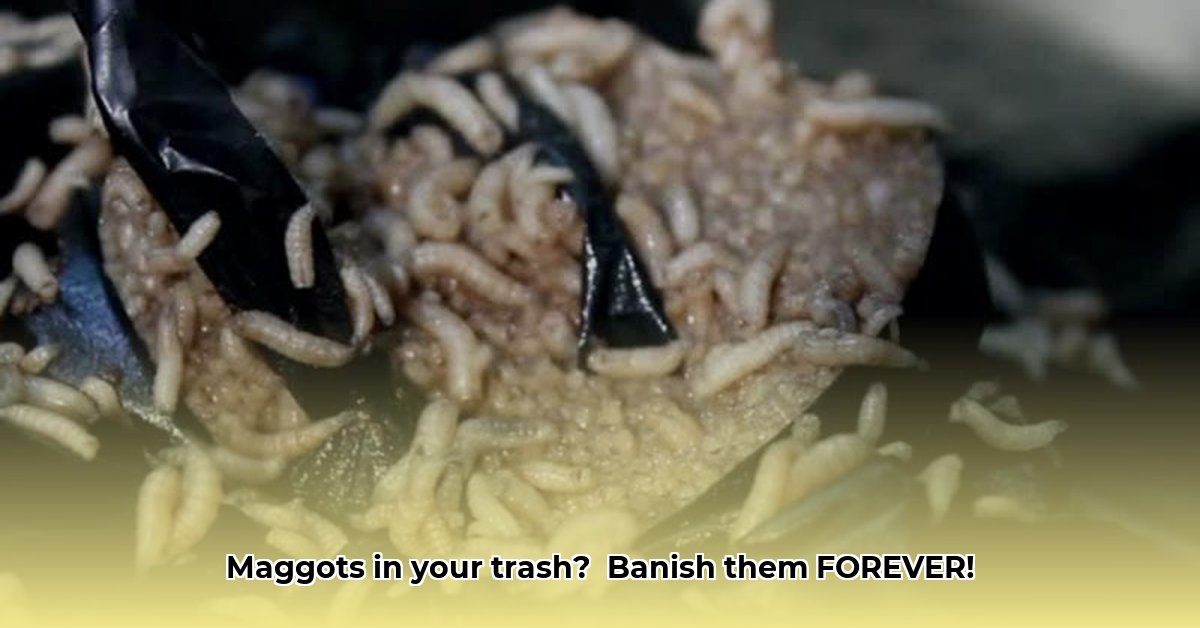Winning the War Against Maggots
Finding maggots in your trash can is an unpleasant surprise, but it’s a solvable problem. This guide provides a practical, step-by-step approach to eliminating maggots and, more importantly, preventing them from returning. We’ll cover everything from understanding why they appear to implementing effective prevention strategies and troubleshooting persistent issues.
Understanding the Enemy: Why Maggots Appear
Those wriggling maggots are fly larvae, hatched from eggs laid by houseflies and other fly species attracted to decaying organic matter in your trash. Your garbage can, especially in warmer weather, becomes an all-you-can-eat buffet for flies, accelerating the maggot life cycle. A swarm of flies buzzing around your bin likely suggests maggots are already present or soon will be.
Prevention: The Best Offense
Preventing maggots is far easier than dealing with an infestation. Here’s a proactive approach:
-
Starve Them Out: Rinse food containers before discarding them. For strong-smelling scraps like meat or fish, consider freezing them until trash day or composting them.
-
Fortress Trash Can: Secure a tight-fitting lid on your trash can to block fly access. Avoid overfilling the can, which can make it easier for flies to reach the contents.
-
Natural Deterrents: Sprinkle diatomaceous earth (food grade) in the bottom of your bin. Planting fly-repelling herbs like basil, mint, or lavender near your bin can also help.
-
Sparkling Clean Bin: Regularly rinse your can with hot, soapy water. For a deeper clean, add vinegar and baking soda. Pay special attention to corners and seams.
-
Seasonal Smarts: In summer, increase cleaning frequency. In fall, remove fallen leaves and fruit around your bin to eliminate potential breeding grounds.
Emergency Maggot Control: When Prevention Fails
If you discover maggots, don’t panic. Here are several elimination methods:
-
Boiling Water: Carefully pour boiling water over the maggots for instant elimination. (Caution: May damage plastic cans.)
-
Vinegar: Spray a mixture of one part vinegar to two to three parts water. Vinegar acts as a natural insecticide, cleaner, and deodorizer.
-
Bleach: Spray a 1:1 bleach and water solution, close the lid for 30-60 minutes, and rinse thoroughly. (Caution: Ensure good ventilation; may damage some materials.)
-
Diatomaceous Earth: Sprinkle food-grade diatomaceous earth in the trash can and bags. It dehydrates maggots. (Caution: Avoid inhaling.)
-
Insecticides: Use a commercial insecticide specifically for fly control. (Caution: May harm beneficial insects; follow instructions carefully.)
-
Freezing the Waste (Less Effective): If the waste is contained in a freezer bag or smaller trash bin, freeze it to potentially kill maggots. Efficacy varies with freezing duration.
-
Salt (For Plastic Trash Cans): Sprinkle salt liberally on any maggot-infested areas. Like diatomaceous earth, it works as a desiccant. Avoid use on metal cans due to potential for corrosion.
Troubleshooting Persistent Problems
- Loose Lid: Use a bungee cord as a temporary fix or replace the can.
- Extra Dirty Can: Soak the can with a strong vinegar solution for several hours before scrubbing.
- Recurring Maggots: Re-evaluate your waste management. Ensure spills are cleaned, containers rinsed, and bags sealed tightly.
Ongoing Research and Future Solutions
While the methods presented here are generally effective, ongoing research continually explores new ways to manage maggots. Some entomologists are investigating biological controls like beneficial nematodes. The complex behavior of flies and the evolution of pest control mean new strategies may emerge.
Reader Tips and Community Knowledge
What strategies have you found effective in preventing maggots? Share your tips in the comments below! Collective knowledge helps us all maintain cleaner, healthier homes.
- Benefits of Work-Life Balance Enhance Health, Happiness, and Performance - December 22, 2025
- Occupational Wellness Activities Boost Employee Well-being And Productivity At - December 21, 2025
- Occupational Wellness Examples That Enhance Your Work Life - December 20, 2025
















